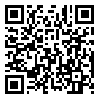Volume 17, Issue 58 (May 2007)
J Mazandaran Univ Med Sci 2007, 17(58): 17-29 |
Back to browse issues page
Download citation:
BibTeX | RIS | EndNote | Medlars | ProCite | Reference Manager | RefWorks
Send citation to:



BibTeX | RIS | EndNote | Medlars | ProCite | Reference Manager | RefWorks
Send citation to:
Eshqi F, Abdi R, Khani H, Fazlolallahpour A, Alvandipour M, Tayebi fard H. Utility of Magnetic Resonance Cholangiography, Ultrasonography and Liver Function Test in Preoperative Assessment of Patients with Symptomatic Cholecystolithiasis and Suspected Biliary Obstruction (A Comparative Study). J Mazandaran Univ Med Sci 2007; 17 (58) :17-29
URL: http://jmums.mazums.ac.ir/article-1-209-en.html
URL: http://jmums.mazums.ac.ir/article-1-209-en.html
Abstract: (16731 Views)
Background and purpose: Evaluation of suspected biliary obstruction is performed by common old methods such as Ultrasound, CT, and invasive cholangiography. These techniques have limitations due to the poor visualization of intraductal stones (US, CT) and the need for an invasive procedure (ERCP, PTC). Magnetic resonance cholangiography (MRC) is noninvasive imaging modality that provides good visualization of the hepatobiliary system. The aim of the present study was to determine the utility of Magnetic resonance cholangiography, Ultrasonography and Liver function test in preoperative assessment of patients with symptomatic cholecystolithiasis and suspected biliary obstruction.
Materials and Methods: Patients selected for elective open cholecystectomy with risk factors of common bile duct stones as suspected biliary obstruction underwent MRC, US, and Liver function test preoperatively. All patients underwent open cholecystectomy and intraoperative cholangiography in Imam Khomeini Hospital, Academic Medical Center of Medicine School, Mazandaran University of Medical Sciences, Sari, Iran from January 2003 to February 2006.
Results: 30 patients (11 male, 19 female) with the mean age 53.93±13.32 years in a range of 38-75 years underwent all preoperative and operative assessments. 81.81% Sensitivity, 87.5% specificity and 83.33% efficacy in MRC 18.18% Sensitivity, 87.5% specificity and 36.66% efficacy in US, and 54.54% Sensitivity, 37.50% specificity and 50% efficacy in Liver function test were the results obtained for biliary stones.
Conclusion: MRC has excellent diagnostic accuracy in the detection of biliary disease. Due to its non-invasive nature, MRI may have advantages over invasive cholangiography when diagnosis is the major goal of the procedure.
Materials and Methods: Patients selected for elective open cholecystectomy with risk factors of common bile duct stones as suspected biliary obstruction underwent MRC, US, and Liver function test preoperatively. All patients underwent open cholecystectomy and intraoperative cholangiography in Imam Khomeini Hospital, Academic Medical Center of Medicine School, Mazandaran University of Medical Sciences, Sari, Iran from January 2003 to February 2006.
Results: 30 patients (11 male, 19 female) with the mean age 53.93±13.32 years in a range of 38-75 years underwent all preoperative and operative assessments. 81.81% Sensitivity, 87.5% specificity and 83.33% efficacy in MRC 18.18% Sensitivity, 87.5% specificity and 36.66% efficacy in US, and 54.54% Sensitivity, 37.50% specificity and 50% efficacy in Liver function test were the results obtained for biliary stones.
Conclusion: MRC has excellent diagnostic accuracy in the detection of biliary disease. Due to its non-invasive nature, MRI may have advantages over invasive cholangiography when diagnosis is the major goal of the procedure.
Keywords: Magnetic resonance cholangiography, Ultrasonography, Liver function test, Cholecystectomy, Suspected biliary obstruction
Type of Study: Research(Original) |
| Rights and permissions | |
 |
This work is licensed under a Creative Commons Attribution-NonCommercial 4.0 International License. |






